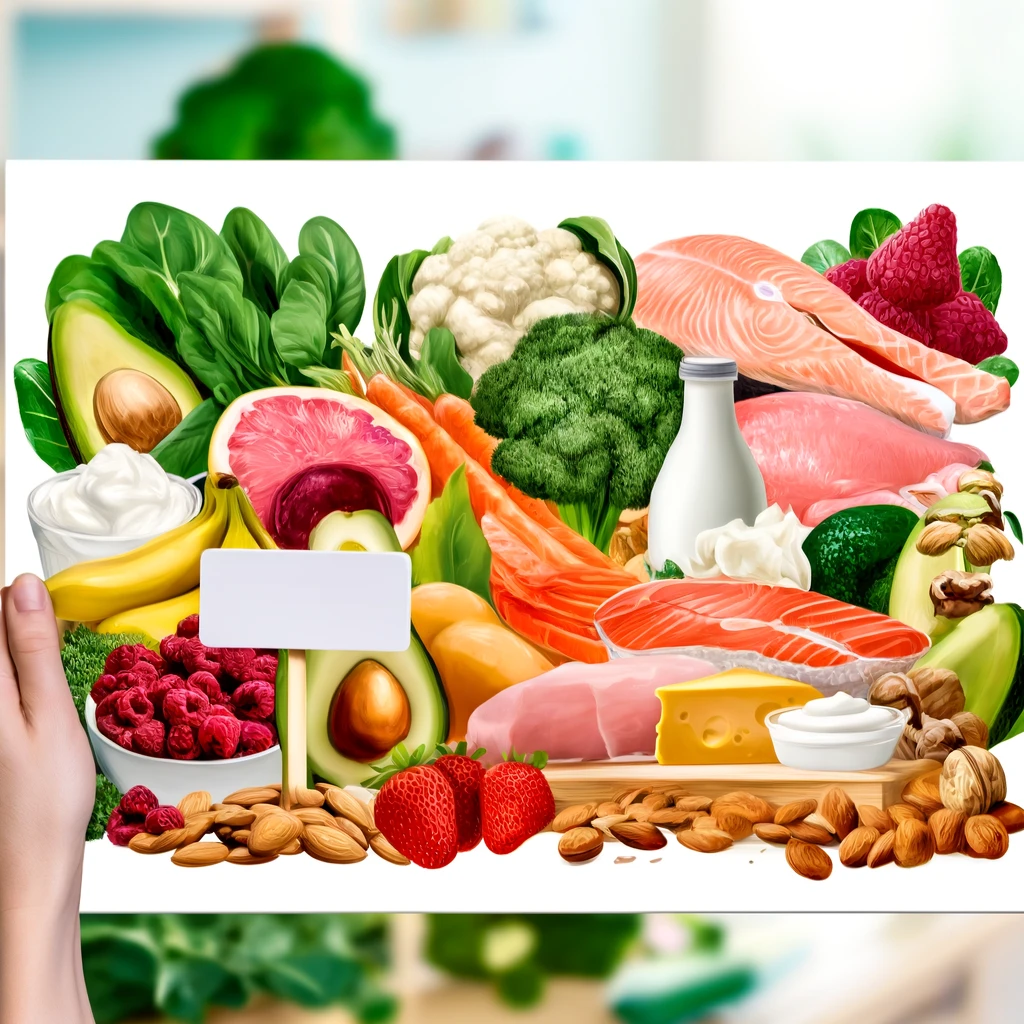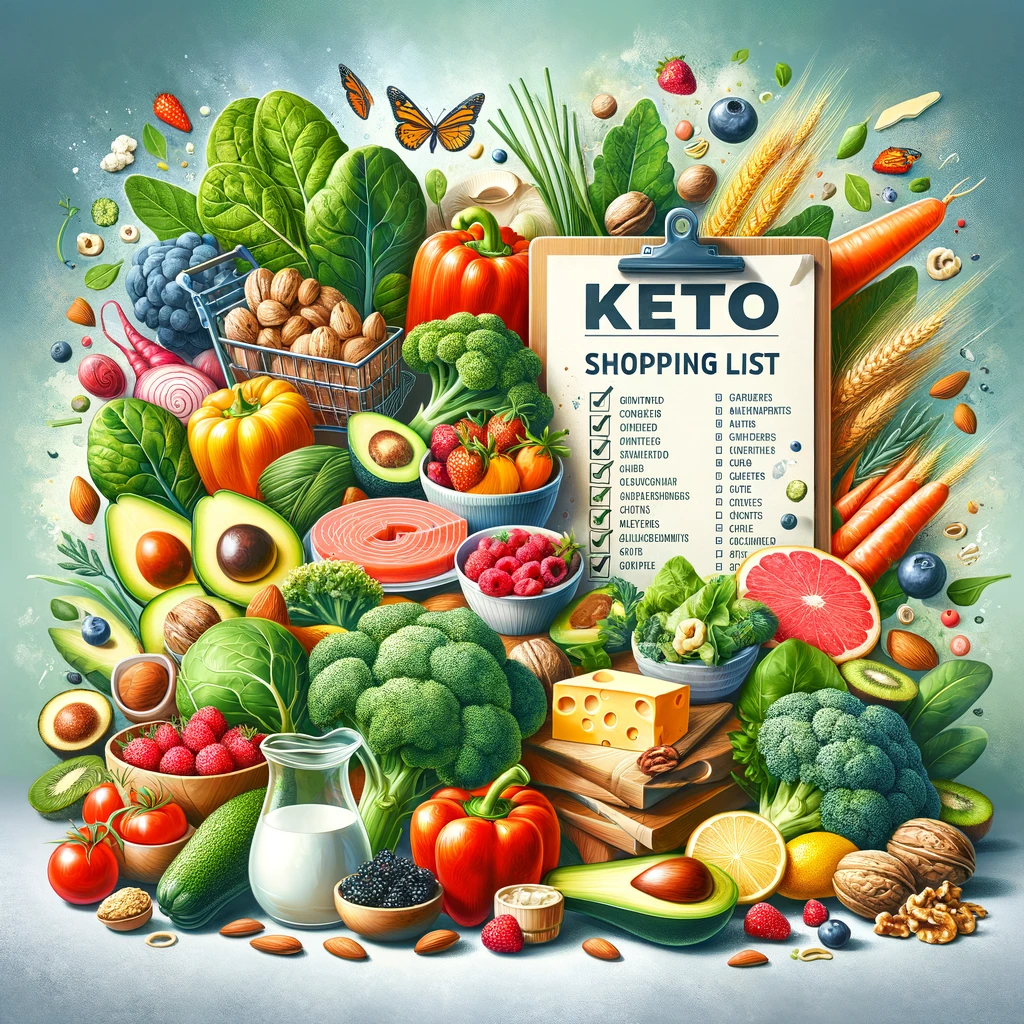Starting your ketogenic lifestyle? Whether you’re new to keto or an experienced low-carb enthusiast, preparing Your Keto Diet Grocery List is key. The vast array of choices in grocery aisles might seem daunting, but no worries!
I’m here to help you create an ideal keto-friendly shopping list that delights your palate while managing your carb intake. Let’s get started and simplify your shopping trips.
Keto Basics Overview
To start, let’s revisit the essentials. The keto diet emphasizes a high-fat, moderate-protein, and low-carb eating plan. This dietary change induces ketosis, a state where your body burns fat for energy instead of carbs. What does this mean for your grocery shopping? You’ll need to say goodbye to high-carb items and welcome fat-rich, low-carb options into your kitchen.
Vegetables: Your Low-Carb Champions
Not every vegetable fits the keto bill. Include these in your basket:
* Leafy Greens: Spinach, kale, and arugula are essential for their nutrients.
* Cruciferous Vegetables: Stock up on broccoli, cauliflower, and Brussels sprouts for their versatility and fiber content.
* Above-Ground Vegetables: Zucchini, bell peppers, and asparagus keep your meals varied without adding excess carbs.
Fruits: A Careful Selection
Navigating fruits on keto can be tricky, but you do have choices:
* Berries: Enjoy strawberries, raspberries, and blueberries in moderation.
* Avocado: A keto favorite, avocados are rich in healthy fats.
Proteins: Choose High Quality
Protein is vital, but it’s important to choose types that align with keto principles:
* Meats: Preferably choose grass-fed or organic.
* Poultry: Options like chicken, turkey, and duck are excellent.
* Seafood: Look for omega-3 rich options like salmon and mackerel.
* Eggs: A keto essential, they’re versatile and nutritious.

Dairy: Opt for Full-Fat
In keto, full-fat dairy is encouraged:
* Cheese: Choose quality, hard cheeses such as cheddar, parmesan, or gouda.
* Butter and Cream: Opt for grass-fed butter and heavy cream.
Nuts and Seeds: Ideal Snacks
These are perfect for a quick snack or adding a crunch to meals:
* Almonds and Walnuts: Watch your portions.
* Chia and Flaxseeds: Great for keto recipes due to their fiber and omega-3 content.
Fats and Oils: Healthy Choices
Selecting the right fats and oils is crucial:
* Coconut Oil and Olive Oil: Great for cooking and as dressings.
* MCT Oil: Adds an energy boost to coffee or smoothies.
Pantry Essentials: Keto Must-Haves
Always keep these keto staples stocked:
* Almond and Coconut Flour: Ready for your baking needs.
* Sweeteners: Use Stevia or erythritol to sweeten without the carbs.
* Bone Broth: Adds flavor and nutrition to your dishes.
Beverages: Importance of Hydration
Stick to these for hydration:
* Unsweetened Almond Milk: A great dairy substitute.
* Bone Broth: Also hydrating and nutritious.
* Coffee and Tea: Avoid sugar and carb-rich creamers.
Condiments and Spices: Keep It Flavorful
Add taste without the carbs:
* Fresh Herbs: Basil, cilantro, and parsley can enhance any meal.
* Spices: Maintain a variety to keep meals interesting.
* Low-Carb Sauces: Opt for sugar-free options like mustard, mayo, and hot sauce.
Meal Planning: Essential for Keto Success
Planning your meals simplifies both shopping and meal prep, helping you maintain your keto regimen. Resist temptations at the store by sticking to your list. Whenever possible, opt for seasonal and local products for better quality and nutrition. Always read labels to avoid hidden carbs.
Conclusion:
Begin Your Keto Journey Here
With the right keto shopping list, you’re set to conquer the grocery store and stock your home with delicious, low-carb options. Remember, diversity enhances your diet, so explore new foods and recipes. Enjoy your shopping!
FAQs about Your Keto Diet Grocery List
Can I eat fruits on keto?
While fruits are nutritious, the keto diet limits which types you can eat due to their sugar levels. Only certain low-carb fruits are suitable.
Is following a keto diet expensive?
While some keto-friendly foods are pricier, managing your budget and making cost-effective choices can keep costs down.
How often should I shop on a keto diet?
Weekly shopping is ideal to keep ingredients fresh and meals interesting.
Can I dine out on keto?
Yes, focus on protein and vegetables, request substitutions, and watch for hidden carbs.
What if I’m allergic to nuts?
For those with nut allergies, seeds are a fantastic alternative, offering similar benefits and versatility in keto recipes.
Sharing is caring!
